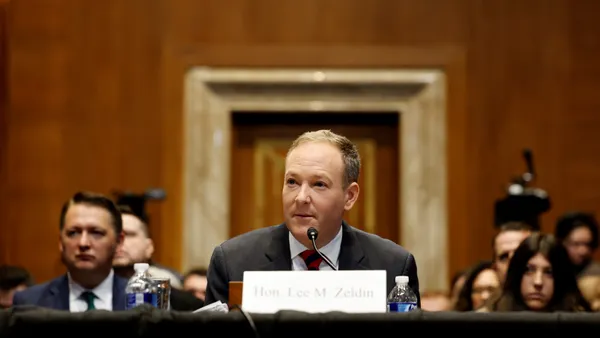The following is an opinion piece written by Tyler Huebner and Brad Klein. Huebner is the executive director of RENEW Wisconsin, a renewable advocacy organization in the state. Klein is a senior attorney at the Environmental Law & Policy Center, an environmental advocacy organization in the Midwest.
Last fall, we participated first-hand in three Wisconsin utility proposals relating to fixed charges and distributed generation.
More recently, we have followed the recent op-eds in Utility Dive from Dr. H. Edwin Overcast and Dr. Ashley C. Brown on fixed charges and net metering. One thing stood out to us in their editorials: Lots of words, but almost no actual data!
To remedy this — as our organizations did in last year’s rate cases for these Wisconsin utilities — we will provide some numbers.
Digging into the data
In Wisconsin, all three utilities argued that customers with solar panels are not paying their fair share of the utilities’ fixed costs, and therefore every single customer should see their monthly connection fee go up from $9-$10 per month to $16-$25 per month.
Raising the monthly connection fee hurts low-using energy customers, who, as the National Consumer Law Center found, are often low-income, minorities, fixed-income, apartment dwellers, and senior citizens.
Let’s put Wisconsin’s level of solar adoption in perspective compared with the dramatic fixed charge increases requested.
Wisconsin Public Service
Wisconsin Public Service (WPS), based in Green Bay, serves approximately 445,000 electric customers. Of these, only 340 have installed distributed generation in the past 10 years — 0.08% of their customer base.
Further, even WPS conceded that the majority of those customers — 65%, or 221 homeowners — were fully paying their fixed costs under the utility's way of counting. That is because, although they have solar, these 221 customers’ photovoltaic systems don't provide all their electricity usage.
The total unrecovered revenue requirement — what the utility thinks it should earn but doesn’t because solar customers invest in solar on their roofs — amounts to only $21,000 for the entire year. That is approximately 0.002% of the company’s total 2013 monopoly revenue.
This is how WPS solves its “problem” — it seeks to shift $6.5 million from variable rates into unavoidable monthly fees for each customer, in order to offset a theoretical shortfall of only $21,000 caused by 119 customers who installed solar equipment largely at their own expense.
We Energies
Next up: We Energies, based in Milwaukee, which serves approximately 1.1 million electric customers. It requested an increase in monthly connection fees from $9.13 to $16, which will shift more than $7 million a year from usage-based rates to guaranteed fixed monthly fees. We Energies also proposed to apply additional charges on residential and small business customers with their own distributed generation systems, which would amount to about $20 per month for a 5 kW solar PV system — $3.80 per kW per month, to be specific.
About 450 We Energies customers have distributed generation and use net metering, or just 0.04% of their customers. The increased fixed charges and solar charges on those 450 customers will amount to about $117,000, or about 0.004% of the utility’s revenues.
Madison Gas & Electric
Finally, Madison Gas & Electric used similar arguments to request monthly fixed fees rise from about $10 to $19 (after backing off plans to raise them significantly higher in future years). Just 0.14% of their customers use net metering.
'Swatting a fly with a nuclear weapon'
Collectively, only 6 out of every 10,000 customers for these utilities have distributed generation. “Swatting a fly with a nuclear weapon” is the type of analogy that should be used when considering these Wisconsin proposals, and the result is a “cure” that’s much worse than the disease.
Especially when the disease hasn’t even been proven to exist. The only analysis in the record concerning Wisconsin-based costs and benefits of distributed generation was gathered through a data request: a 2009 study commissioned by We Energies and conducted by Clean Power Research, which concluded that solar PV is worth about 15 cents per kWh at a levelized value for 30 years (see page ES-3). Since We Energies’ electric rates were about 13.9 cents per kWh in 2014, it turns out that solar customers may very well be subsidizing all other We Energies ratepayers.
Unfortunately, none of the utilities offered any new analysis of the benefits of distributed generation in these proceedings. Nearly every intervening organization suggested that the Wisconsin Commission conduct real studies looking at the costs and benefits of net metering and distributed generation as has been done in Vermont (see section 3.3.3), Nevada, Mississippi, Minnesota, and other states. The Utah Commission told Rocky Mountain Power to beef up their analysis, too (see page 66). But in Wisconsin, that suggestion was denied.
Wisconsin’s Public Service Commission has been approving the utilities’ distributed generation restrictions for years despite the repeated lack of evidence. RENEW Wisconsin, the local renewable energy advocacy organization, has been forced to take these unsupported decisions to court. Luckily, it has prevailed on three of the four counts brought the past two years, with the judge remanding decisions back to the Commission for further fact-finding. Along with The Alliance for Solar Choice (TASC), RENEW has appealed the 2014 We Energies solar charge decision as well.
Does net metering really hurt the poor?
In an op-ed in Utility Dive, Dr. Brown states that one of his primary concerns with net metering is that it may hurt the poor.
In his testimony here in Wisconsin, he provided absolutely no state-specific data to support his theory that solar owners, who make up just 4 of every 10,000 We Energies customers, are causing undue hardship on the poor. Further, he offered no alternative to the higher fixed customer charges which unquestionably do hurt many of We Energies’ low-income ratepayers.
The result of the Wisconsin rate cases is that a typical apartment-dwelling customer served by these utilities will pay $60-$75 more each year for electricity. Even granting the utilities’ extreme position that excess solar is worth nothing more than the cheapest electron you can buy on the market — contradicted by We Energies’ own 2009 study mentioned above — those same customers paid no more than a dime a year extra due to current solar customers.
As the recent Washington Post article exposed, this solar battle is not really about customer fairness, it is about protecting utilities from competition, plain and simple. (Note that Dr. Brown’s Harvard Electricity Policy Group is supported heavily by the electric utility industry.)
Solar customers and the future of the utility industry
There is no doubt that the electricity industry is entering a new phase in Wisconsin and other states due to declining sales and the ever-increasing affordability of solar panels for customers. Thus far however, the small number of solar customers here in Wisconsin does not require wholesale changes to how we set rates. We have plenty of time to get these policies right and many, if not almost all, other states are in the same boat.
Our advice from the trenches in Wisconsin to utilities and Commissions in other states: Follow the lead of Vermont, Nevada, Mississippi, Minnesota, Maine, Utah, and other states on this issue — not Wisconsin’s 2014 decisions. Do the studies. Get the data. Hash out the details.
The best way to address this industry transition is with solid analysis of the utility’s actual situation, open discussion, and a long-run, forward-looking view. Not by ramming through “back to the past” electric rate policies against broad objections from citizens and that undisputedly harm low-use and fixed-income customers who can least afford the higher bills they now have to pay.













